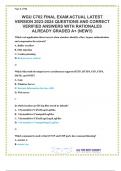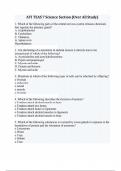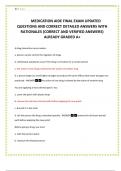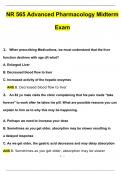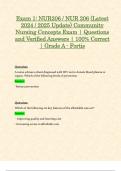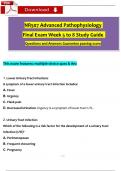Exam (elaborations)
The Biologic Basis For Disease In Adults And Children, 5th Edition | Pathophysiology TEST BANK - _Huether & McCance | complete guide.|Grade A+.
The Biologic Basis For Disease In Adults And Children, 5th Edition | Pathophysiology TEST BANK - _Huether & McCance | complete guide.|Grade A+.The Biologic Basis For Disease In Adults And Children, 5th Edition | Pathophysiology TEST BANK - _Huether & McCance | complete guide.|Grade A+.The Biologic ...
[Show more]




